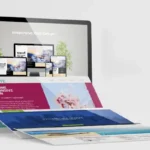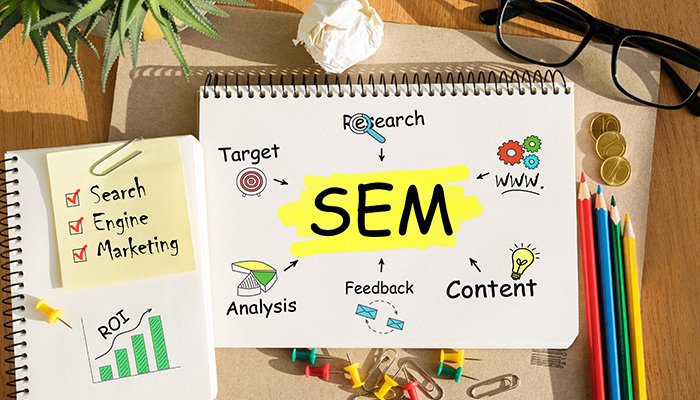
How to Build a Simple, Stunning Portfolio Website with WordPress (No Coding Required!)
July 23, 2025
How to Speed Up a Slow WordPress Website (Even Without a Developer)
July 28, 2025In today’s fast-paced digital world, a website that looks “nice” is no longer enough. Your site needs to be built with purpose, to attract, engage and ultimately convert visitors into clients. Whether you’re running a portfolio, agency site or e-commerce brand, understanding the fundamentals of conversion optimization can dramatically boost your results.
This beginner’s guide walks you through the most effective, research-validated design principles to help optimize your website for conversions no tech expertise required.
Why Conversion Optimization Matters
Conversion Rate Optimization (CRO) is the process of increasing the percentage of visitors who take a desired action like filling out a form, booking a call or making a purchase.
Fact: A 1-second delay in load time can reduce conversions by up to 20% (Source: Portent, 2023)
Stat: The average website converts at around 2.35%, but top-performing sites hit 11%+ (Source: WordStream)
-
Use Clear & Compelling CTAs (Calls-to-Action)
What is a CTA?
A CTA is a button or message that prompts the user to take action, like “Book a Free Call,” “Download Now,” or “Get a Quote.”
Best Practices:
Make it visible: Place it above the fold (top section) and repeat throughout the page.
Use action-oriented words: E.g., “Get Started Today” performs better than “Submit.”
Create urgency or value: Add phrases like “Limited Offer” or “Free for 30 Days.”
Example: Instead of “Contact Us,” try “Let’s Talk About Your Project” for a more inviting CTA.
Verified Reference: HubSpot CTA Design Guide

-
Improve Loading Speed (It’s Non-Negotiable)
Fast-loading websites keep users engaged and reduce bounce rates.
Tools to Test & Fix Speed:
- Google PageSpeed Insights
- GTmetrix
- Pingdom Tools
Optimization Tips:
- Compress images with TinyPNG or Smush
- Use caching plugins like WP Rocket or LiteSpeed Cache
- Choose fast, lightweight themes (e.g., Astra, GeneratePress)
Google recommends keeping load times under 3 seconds for the best user experience.
Verified Source: Kinsta’s Page Speed Optimization Guide (2025)
-
Build Trust with Signals That Reassure
Trust = Conversions. If users feel secure and confident, they’re more likely to act.
Key Trust Signals:
- Client testimonials (text, video or logos)
- Security badges (SSL, payment icons, etc.)
- Case studies or success stories
- Social proof: Reviews, ratings, user counts
Example: A testimonial saying, “After redesigning our website, sales doubled in 2 months,” instantly builds credibility.
Verified Source: CrazyEgg – Trust Signals & CRO

-
Simplify Your Navigation Structure
Complex navigation = frustration = lost leads.
Keep things simple, intuitive and focused.
Key Navigation Rules:
- Use 5–7 top-level menu items
- Keep labels short and clear (e.g., “Portfolio,” “Contact,” “About”)
- Add a sticky header for easy access
- Use breadcrumbs for multi-page navigation
Verified Source: Nielsen Norman Group – Navigation Usability
-
Make Your Site Fully Mobile-Friendly
As of 2025, over 60% of web traffic comes from mobile. If your site isn’t optimized for smartphones, you’re leaving conversions on the table.
Mobile Optimization Tips:
- Use responsive themes
- Test on multiple devices (iOS, Android, tablets)
- Make buttons large and tappable
- Avoid heavy pop-ups that block content
Bonus Tip: Use Google’s Mobile-Friendly Test Tool: https://search.google.com/test/mobile-friendly
-
Use Visual Hierarchy to Guide the Eye
Visitors scan before they read. A strong visual structure leads the user naturally to your CTA.
How to Build Hierarchy:
- Use large headlines, bold CTAs and whitespace
- Group related content together
- Keep important info at the top of the page
Verified Source: Interaction Design Foundation – Visual Hierarchy

-
Use Analytics & A/B Testing to Refine Results
Don’t rely on guesswork. Monitor how users behave and test what works best.
Useful Tools:
- Google Analytics 4: See how users navigate
- Hotjar or Microsoft Clarity: Heatmaps and scroll tracking
- Optimizely or Google Optimize: A/B testing different layouts or CTA styles
Example: A/B test “Get a Free Quote” vs “Let’s Build Together” and see which converts better.
Verified Source: Hotjar – Website Behavior Analytics
Final Checklist for Conversion-Ready Websites:
✔ Clear CTA above the fold
✔ Load time under 3 seconds
✔ Client testimonials or reviews
✔ Responsive on all devices
✔ Easy-to-use navigation
✔ Fast and secure hosting
✔ Compelling visuals and clean layout
✔ SEO basics in place (meta titles, alt text, readable URLs)
Ready to Turn Visitors into Clients?
Optimizing your website for conversions doesn’t mean a complete redesign. Even small changes, like speeding up your site or refining a CTA can yield significant improvements.
Need help analyzing your current website or planning a conversion-focused redesign? Let’s chat!
Reach out today to book a free website audit or consultation.
If you have any questions regarding “Optimize Your Website” feel free to contact us. For inquiries and consultations, call us at: +92 321 4808303 or Email us at: hello@owaisgilani.com.
Disclaimer: The information shared on this website is for educational and informational purposes only and reflects my personal views and experiences. While I strive to provide accurate and helpful content, readers should use their own judgment and consult with a qualified professional before making any decisions based on the information here. I am not responsible for any actions taken based on this content. Feel free to reach out to me if you need clarification or have questions before using any part of this information.



